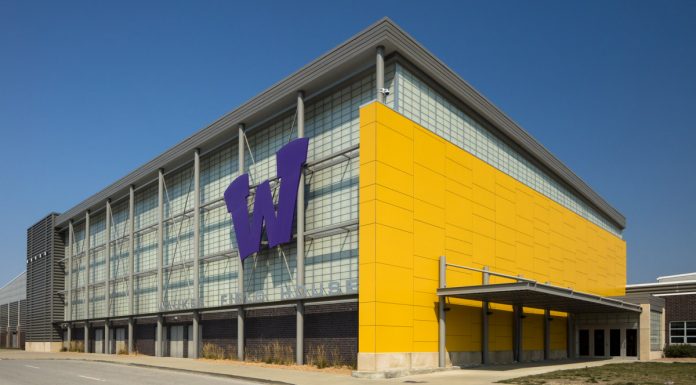Week five of the 2021 session was full of more subcommittee and committee work as we inch closer and closer to funnel week. After this week I may introduce a bill to rename our state “New Alaska”. I know we are getting cold enough and we’ve even had some bear sightings, but I have hope a warm-up is coming soon. I know this weather puts a lot of pressure on our livestock farmers and to top it off many cattlemen are calving too. Good luck and stay warm!
The Economic Growth and Economic Development Sub-Approp committee have been quiet this week but there has been subcommittee assignments and meetings. We did proceed with one of our caucus priorities this week, The Iowa House passed six pieces of legislation to address Iowa’s child care shortage from multiple angles. HF 230 – Increases the income threshold for the Child Care Tax Credit from $45,000 to $90,000 ; HF 370 – Creates an incentive for employers to provide child care for their employees by providing a tax credit up to $150,000 ; HF 260 – Allows individuals providing child care in their homes to take care of 6 or fewer children, an increase from 5 or fewer ; HF 292 – Raises Iowa’s child care rates to the 50th percentile according to the Market Rate Survey ; HF 302 – Creates an “off ramp” from Child Care Assistance program so parents can continue to grow in their career without losing their child care assistance entirely, all at once ; HF 301 – Creates a fund to provide child care workforce grants on a dollar-for-dollar matching basis from communities. These programs will help move child care providers up the pay scale and the education pathway.
We’ve passed HSB 133, the Governor’s Broadband bill, out of subcommittee and will look to talk it over in Information Technology committee this week sometime. We are still hung-up over some of the details of the policy, but hope to come together by the time we vote on the floor.
Empower Rural Iowa Broadband Grant Program funding is available at https://iowagrants.gov. Governor Reynolds has authorized the allocation and expenditure of residual funds totaling $15,452,302.00 from the CARES Act Coronavirus Relief Fund (“Coronavirus Relief Funds”) to address the increased need for internet connectivity due to the COVID-19 pandemic. Projects will provide overall impact in furthering telework, telehealth, distance learning, and other remote services to alleviate the impact of the pandemic in Targeted Service Areas of the State.
Now I’ll dig into a bulk of the education stuff going on. We passed the annual school funding increase out of the House Education Committee on Monday. Supplemental State Aid (SSA) was set at 2.5%, at that time, for both the Regular Program and the Categorical Supplements. Many of us voiced the concerns in caucus that some wanted to see a larger increase, but responsible budgeting and staying on par with recent increases amid the pandemic was, in part, how we landed at 2.5. The Senate was at 2.2%, so ultimately, in a compromise, both chambers agreed to a 2.4% increase.
Like I stated before, the percentage is on par with what has been done in recent years, but enrollment was down by about 7,000 students this school year. Local school boards made decisions to go online or stay in-person and parents and students adjusted according to their personal needs by homeschooling or switching to private schools, which led to an enrollment drop. It is important to understand that this funding level is not a cut to public school funding. This is a 2.5% increase. It may not be as much as public school activists wanted and they are pushing the narrative that Republicans are defunding public education, but we will continue to prioritize the schools and students of Iowa with the continuous increase of Supplemental State Aid (one billion dollar increase over the past decade), transportation equity, and adding an additional ten dollars per student to address equity issues.
Another side note to this, there’s a lot of misinformation out there that this percentage will result in a property tax increase, it doesn’t have to, due to the extension of the Property Tax Relief Payment (PTRP). This means the state will pick up any property tax growth in the Additional Levy portion of the school funding formula.
We also moved along an additional $30 million dollars to schools who found a way to maintain in-person school during the first half of the 2020-21 school year. The goal is to provide those school districts who incurred additional costs related to COVID such as additional substitute teachers, cleaning supplies, tools to adhere to health and safety protocols, etc. To be clear, any school district who had in-person instruction, hybrid or full-time, is eligible for extra funding, and school districts who fail to qualify will not lose any funding as it does not take any funding away from schools that did not meet in person, it is an additional appropriation.
Continuing the education theme, I’ve heard from many folks about HF 222, which would ban the misinformation contained in K-12 curriculum based on the New York Times’ 1619 Project. Like I said before, I like to keep everything on the table, but I’m not too crazy about the state micromanaging curriculum in schools. We should be contacting, and voting accordingly, with our local school boards. But as a parent, I would be highly concerned if this was to be taught in our school. In early 2020, five prominent, highly respected historians requested the New York Times make corrections to the 1619 project. These were left-leaning and partisan leftist historians who have serious problems with “..all the errors and distortions presented in the 1619 Project.”. Some further comments from the historians include: Dr. Wood, who later described the 1619 project as ‘So wrong in so many ways.” Dr. McPherson said the project was an “unbalanced, one-sided account” that “left most of the history out.” Dr. Oakes said “What you really have with this literature is a marriage of neo-liberalism and liberal guilt.” In regards to the 1619 Project and its connection to identity politics, Oakes said the idea that slavery and racism are somehow uniquely American original sins is dangerous. “These are really dangerous tropes. They’re not only ahistorical, they’re actually anti-historical. The function of those tropes is to deny change over time.” The academic community wasn’t the only group to discredit the 1619 Project. The political left even took a swing. A September 2019 piece for the World Socialist Web Site called the 1619 Project a “racialist falsification” of history. But again, my hope is to leave this to the school boards and administrations.
These newsletters are a brief overview of my committee and bill work along with some of the more headline-grabbing bills, but if you have a specific interest, you can dig in the details and keep up with the committee/bill work, by visiting [legis.iowa.gov]. You can search bills by legislator, committee or if you know the bill number. You can even view the committees from the comfort of your home if you know what time they are meeting.












